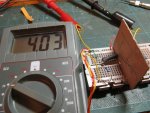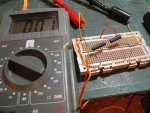I am new to picaxe and have just written my first program which runs well enough in simulator. , however I can't download the program to the 08m.
, however I can't download the program to the 08m.
I have downloaded and installed the AXE027 drivers and have set the coms port.
I'm connected to the chip via the axe 027 usb-board cable , but when I press run I keep getting the error message "hardware not found on com1"
I have checked all the connections etc and have run out of ideas.
Any advice anyone can offer would be greatly appreciated.
I have downloaded and installed the AXE027 drivers and have set the coms port.
I'm connected to the chip via the axe 027 usb-board cable , but when I press run I keep getting the error message "hardware not found on com1"
I have checked all the connections etc and have run out of ideas.
Any advice anyone can offer would be greatly appreciated.



